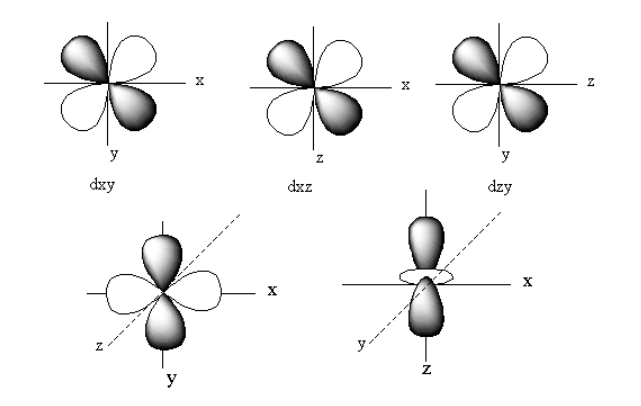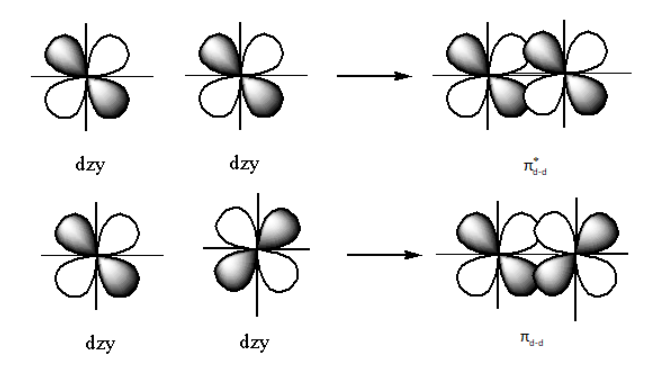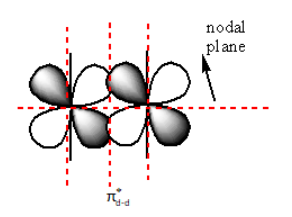
Find the sum of nodal plane of
Answer
481.2k+ views
Hint: The d-orbitals having four lobes overlap sidewise to form a pi bond. When these d-orbitals having four lobes overlap in a destructive manner, the
Complete Step by step answer: Two atomic orbital combines to form two molecular orbitals. Out of these two molecular orbital one is known as bonding which has low energy and the second is known as antibonding which has high energy. s-and one p-orbital forms sigma bond and remaining two p-orbitals form pi bonding.
The d-orbital is a set of five denigrate orbitals named as
The structure of all five d-orbitals is represented as follows:

The pi bond is formed by side-on overlapping of the two d-orbitals. When two d-orbitals overlap out of phase the antibonding orbitals form. The antibonding molecular orbitals are denoted by superscript ‘
The structure of the bonding

The nodal plane is the plane where the probability of finding the electrons is zero.
The nodal plane in

The red dashed lines in the above diagram show the nodal plane. So, the
Therefore, the sum of the nodal plane of
Note: At node the sign of orbital changes. Here, the dark colour and light colour of the orbitals shows the different phases of the orbitals. So, the change of colour (dark to light or light to dark) shows the phase change. Pi bonding orbitals form by constructive overlapping of the two d-orbitals. The nodal plane in pi bonding
Complete Step by step answer: Two atomic orbital combines to form two molecular orbitals. Out of these two molecular orbital one is known as bonding which has low energy and the second is known as antibonding which has high energy. s-and one p-orbital forms sigma bond and remaining two p-orbitals form pi bonding.
The d-orbital is a set of five denigrate orbitals named as
The structure of all five d-orbitals is represented as follows:

The pi bond is formed by side-on overlapping of the two d-orbitals. When two d-orbitals overlap out of phase the antibonding orbitals form. The antibonding molecular orbitals are denoted by superscript ‘
The structure of the bonding

The nodal plane is the plane where the probability of finding the electrons is zero.
The nodal plane in

The red dashed lines in the above diagram show the nodal plane. So, the
Therefore, the sum of the nodal plane of
Note: At node the sign of orbital changes. Here, the dark colour and light colour of the orbitals shows the different phases of the orbitals. So, the change of colour (dark to light or light to dark) shows the phase change. Pi bonding orbitals form by constructive overlapping of the two d-orbitals. The nodal plane in pi bonding
Recently Updated Pages
Express the following as a fraction and simplify a class 7 maths CBSE

The length and width of a rectangle are in ratio of class 7 maths CBSE

The ratio of the income to the expenditure of a family class 7 maths CBSE

How do you write 025 million in scientific notatio class 7 maths CBSE

How do you convert 295 meters per second to kilometers class 7 maths CBSE

Write the following in Roman numerals 25819 class 7 maths CBSE

Trending doubts
State and prove Bernoullis theorem class 11 physics CBSE

What are Quantum numbers Explain the quantum number class 11 chemistry CBSE

Write the differences between monocot plants and dicot class 11 biology CBSE

Who built the Grand Trunk Road AChandragupta Maurya class 11 social science CBSE

1 ton equals to A 100 kg B 1000 kg C 10 kg D 10000 class 11 physics CBSE

State the laws of reflection of light




